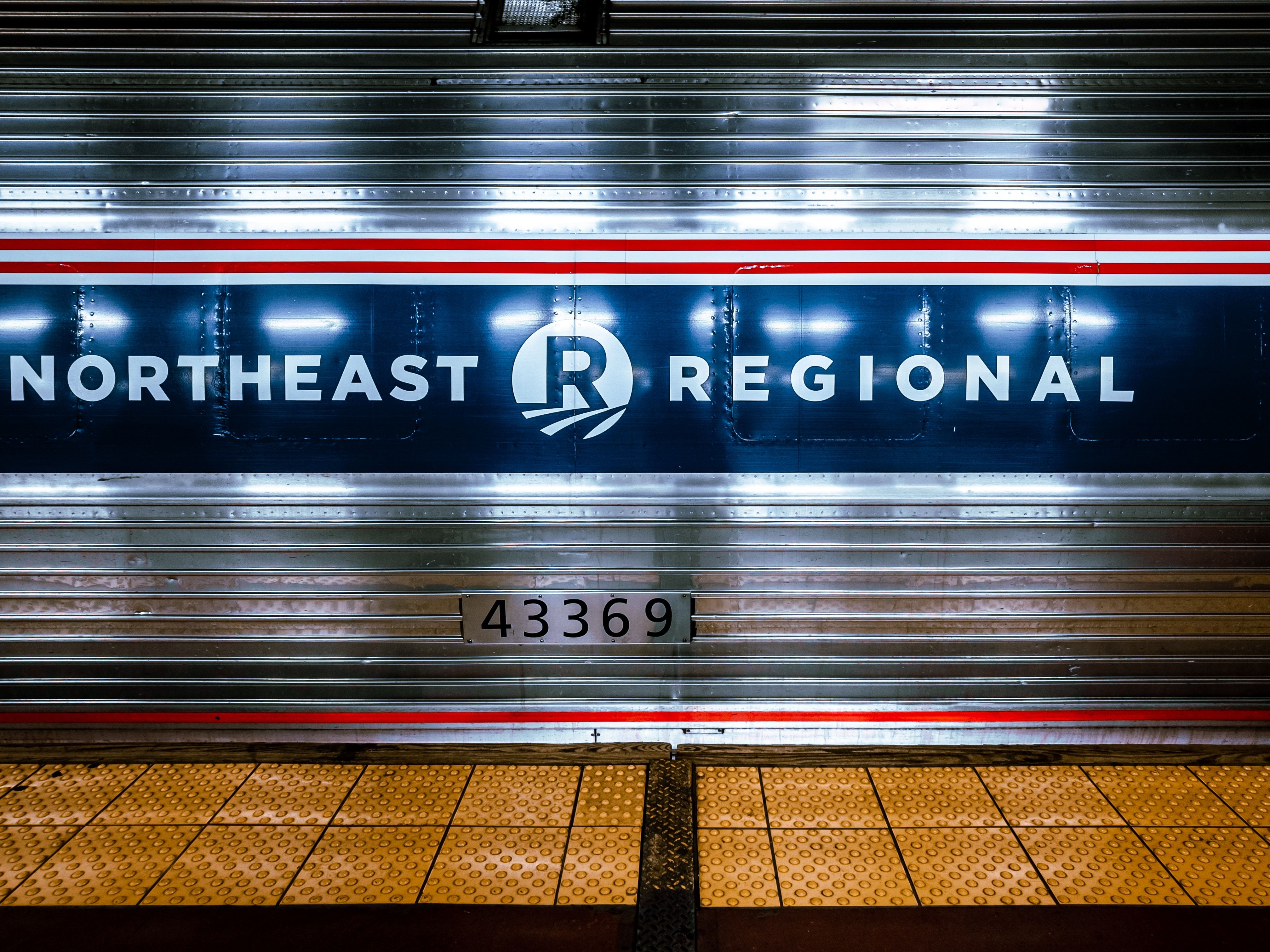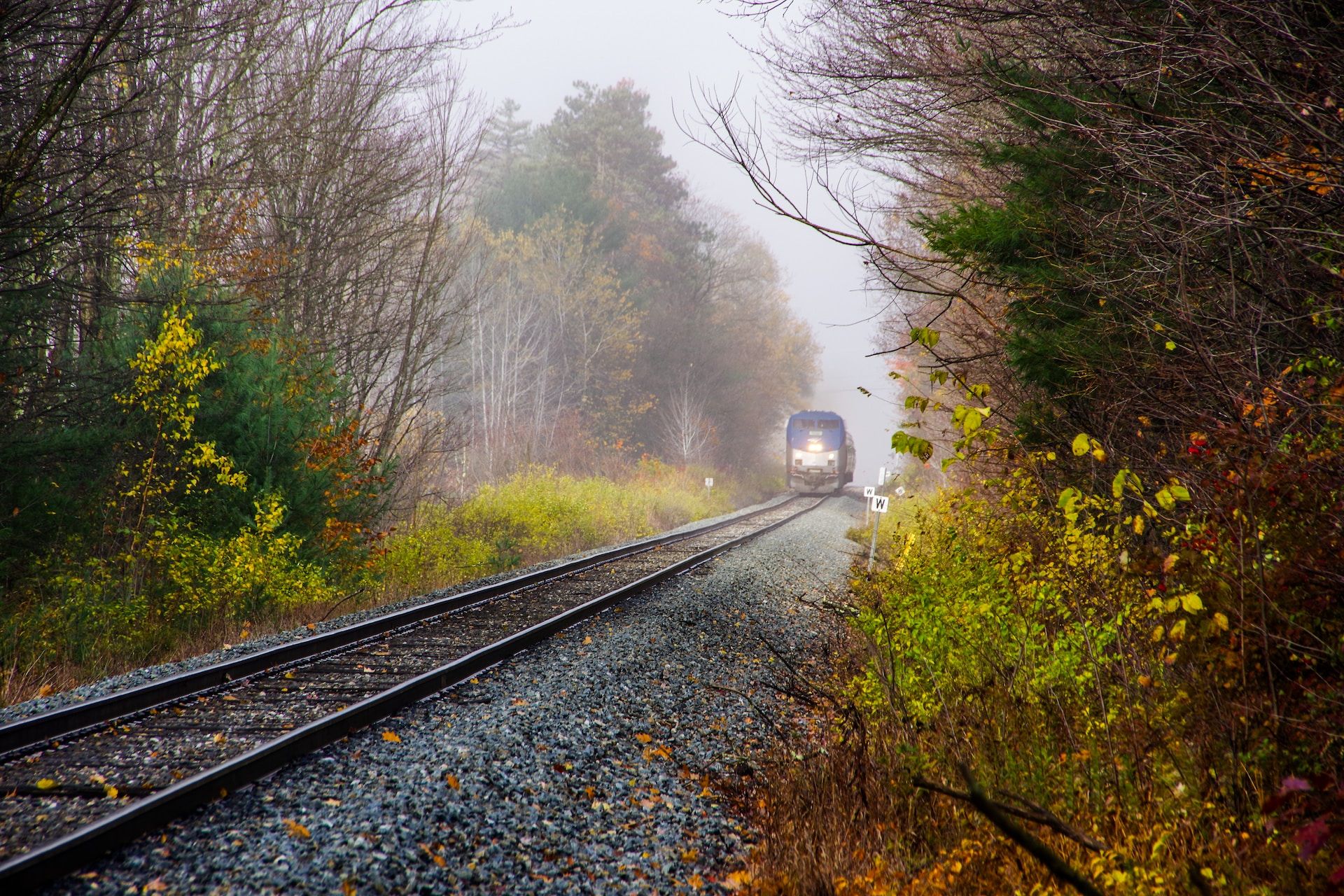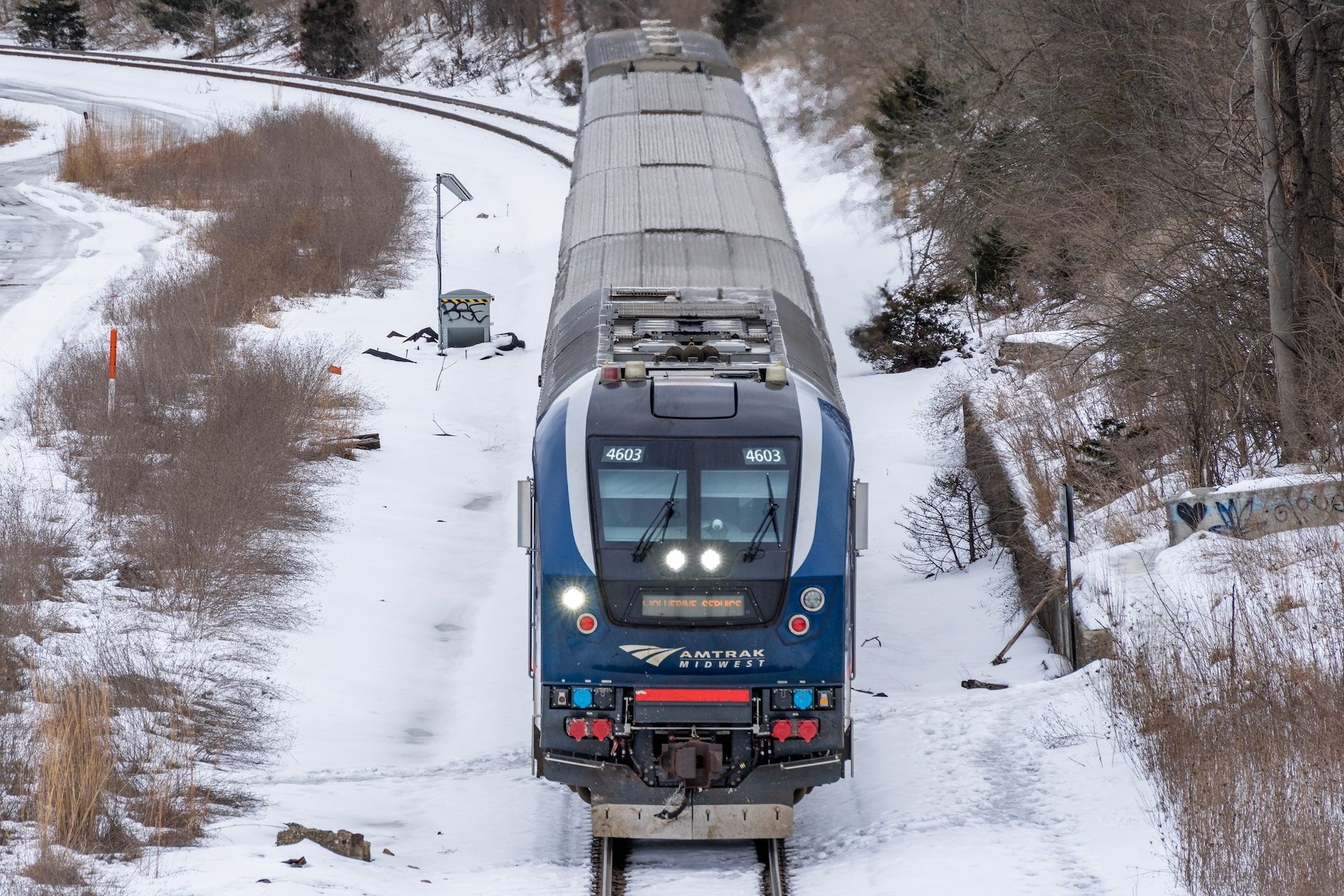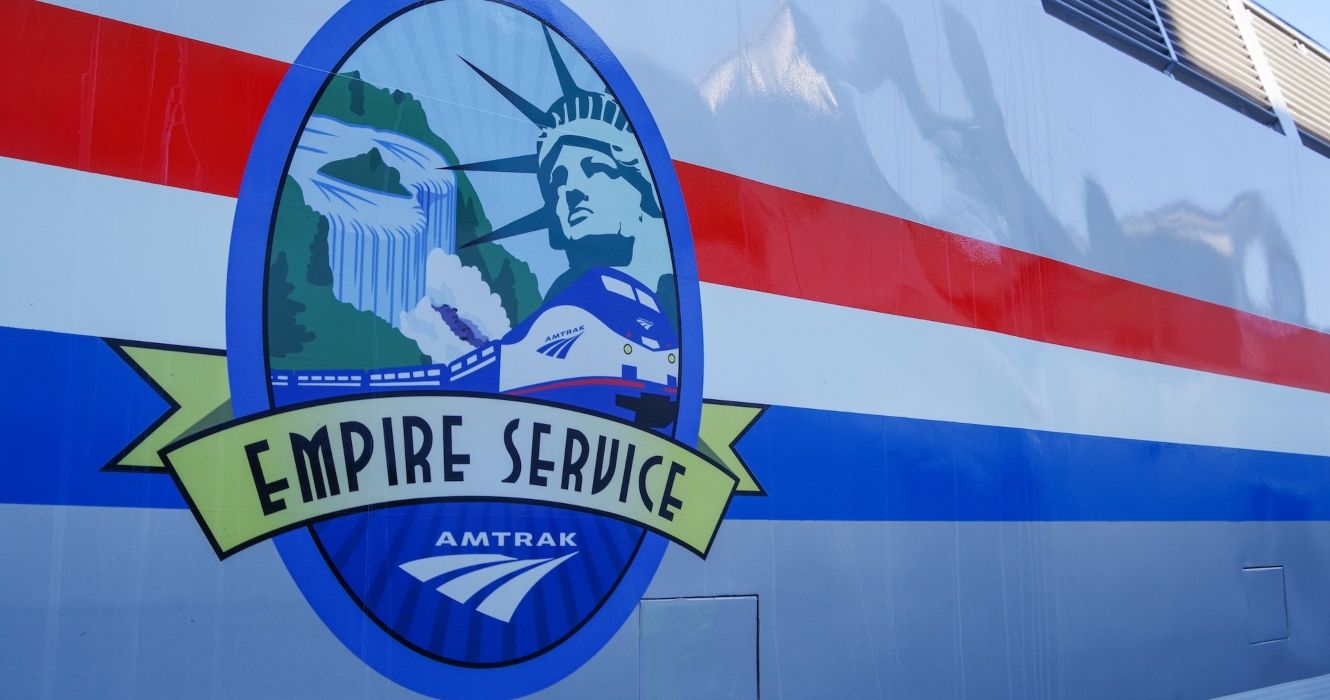Summary
- Amtrak's train tracker map allows commuters to track their train in real-time and stay informed about delays and cancellations.
- Users can search for a specific train by typing its name or number in the search bar on the web page.
- The Amtrak Train Tracker app provides users with features such as train status tracking, contact-free eTicket scanning, and access to route and station information.
There is a lot to know about booking with Amtrak, but there are some key features of the train service that make traveling via rail convenient. Amtrak's train tracker map and real-time status feature can each show commuters where Amtrak trains are at any given time, along with a range of key details.
With unexpected delays and cancelations being a normal part of Amtrak's yearly operations, travelers being able to track their train is a great way of remaining informed by knowing precisely where the train is and whether there is a delay. However, there are a few things to know about the Amtrak train tracker.
10 Can Amtrak Trains Be Tracked? Yes!
The first thing to know about the Amtrak Track Your Train Map is that, as one would expect, it shows every Amtrak train live. There are likely to be several dozen Amtrak trains in service at any given time.
However, the morning and late afternoon to early evening tend to see more trains running than usual, given that these are generally Amtrak's peak hours.
- Average number of Amtrak trains operating daily: 300+ trains
9 Search For A Train By Its Name Or Number
Naturally, it would be pretty time-consuming for a commuter to pinpoint their train on the map, even if they have a good idea of the general area the train is in at any given time. That's why it's good to know how to quickly find a train by simply typing in a relevant detail in the search bar toward the top of the web page.
In this search bar (with the words 'Track A Train' to the left and 'Go' to the right), travelers can simply type the name or number of their train to find out where it is, along with additional key details.
- Average number of passengers commuting with Amtrak daily: 87,000
Many Amtrak routes will have multiple trains operating at any given time. As a result, simply typing in a train's name (e.g. Cascades, Silver Star, etc.) may provide several results. Therefore, it's essential that travelers can differentiate between the various trains running along the same route at once. The best way to do so is for travelers to know the number of the train they are waiting on.
For those traveling on Amtrak for the first time, they may want to consider taking a scenic route.
8 Commuters Can Also Check Arrivals/Departures For Specific Stations
Along with using the search bar at the top of the web page to search a train by its name or number, it's also possible to check out the arrivals to and departures from a specific station by typing it in the search bar and hitting enter or clicking go.
Amtrak schedules are well-timed, but it's nice to know if there's a few-minute delay for planning purposes.
Of course, commuters can also simply find their station on the map, but typing the name in the search bar is much easier. Once a station is selected, the station's general location, name, and address will appear on-screen in a small box.
From here, it's possible to click on the '+' symbol next to train arrivals or/and the '+' symbol beside train departures for up-to-date information on the station's schedule.
- Main cause of Amtrak delays: Arguably, freight trains due to their preferential treatment on the same tracks that Amtrak uses
7 The Map Allows Users To Zoom In And Set To Full Screen
Zooming in and out of the Amtrak's Train Your Train map is straightforward. Users can do this by double left-clicking to zoom in or double right-clicking to zoom out, if using a laptop or PC.
For those using a smartphone, 'pinching the screen' and stretching one's fingers away or toward one another can be used to zoom in and out. To clarify, this doesn't mean literally pinching the screen but rather pressing one's fingertips against the screen, starting with them close together.
In any case, there is also a manual approach to zooming in and out with this web page with a + and - symbol in the bottom right of the screen.
To move across or up and down the map, two fingers are also required (this part is a little surprising and a tad inconvenient).
Aside from zooming in and out, there is a full-screen button in the top right corner of the web page. Clicking on this will open a full-screen version of the map. Simply press 'Esc' to exit the full-screen mode afterward.
- How to zoom in and out on the map using a laptop or PC: double left-click or double right-click
- How to zoom in and out of the map using a touchscreen: Pinch the screen and spread fingers apart or move them close together
6 Can You Track Trains In Real-Time?
The main reasons travelers would use the Amtrak train tracker is to find out where their train is (thus how far it is from the station) and to get a sense of when it's likely to arrive.
Again, while commuters can find a train by exploring the map, simply searching for it by name or number using the search bar at the top of the web page can open details of a given train. Also, as mentioned earlier, knowing a train's number may be necessary to ensure commuters can find the right one.
After selecting a train (e.g. by typing its number in the search bar and hitting enter or go or by finding it on the map and clicking on it), a small box will appear with various details.
The primary details provided by this box will include:
- The name and number of the train
- The train's current speed
- Where the train departed from and on what date
- The next station the train will arrive at, estimated time of arrival, and whether it's on time or delayed
There is also a detailed train status available (more on that below). Beyond that, it's worth noting that busier Amtrak routes may have a greater risk of experiencing delays.
- Amtrak launch date: May 1st, 1971
5 A Poor Internet Connection May Lead To Inaccurate Results
Since users need an internet connection to access the Amtrak Track Your Train web page and its real-time information, it's possible that a poor or intermittent internet connection will result in a frozen screen.
Unless a user is paying attention to the strength of their internet at any given time, there is a risk that the map will appear as if it is live but fail to update with time due to a lack of internet connection.
Therefore, users will want to keep an eye on their internet connection (whether it is WiFi or cellular data). For those on board, Amtrak trains generally have basic WiFi as do many stations.
- Average WiFi speed in the U.S.: 119.03 Mbps
4 A Detailed Train Status Is Also Available
By clicking on detailed train status (in the small box that appears after selecting a given train), it's possible to see the time it departed from its initial stop, the times it arrived at each stop after (assuming it has already reached other stops than the first), and whether it was on time or delayed upon reaching these stops.
The stops already covered will have the word 'arrived' at the bottom and all related text will appear in a light gray font. Beneath the stops already covered will be a list of future stops that the train is set to arrive at with its scheduled arrival time and estimated arrival time (which may differ from the scheduled arrival time if the train has experienced delays).
- Annual hourly delays to Amtrak caused by freight trains: 1.1 million hours
3 A Satellite View Is Available Too
Travelers who prefer a satellite view of maps over an animated one can change this as they wish. To do so, users can simply click on the 'Default' button toward the top right of the screen and choose 'Satellite'. To switch back, simply select the 'Satellite' button and choose Default instead.
- Average delays for Amtrak trains: 10-30 minutes, depending on the distance
2 Commuters Can Alternatively Check Their Train Status
Another way of tracking the status of an Amtrak train is to click on the train status button on the home page (found near the top right of the home page). Here, commuters can search by train (with the train's number) or by searching the station.
- How soon passengers must arrive to check in baggage: In most cases, commuters must arrive a minimum of 45 minutes before scheduled departure if they intend to check in baggage or/and require passenger or ticketing assistance. The minimum arrival time can vary from station to station, however.
- How soon passengers must arrive if not checking in baggage or in need of assistance: If a passenger requires no assistance and has no baggage to check in, in most cases, commuters must arrive a minimum of 30 minutes before departure. Again, the minimum arrival time can vary from station to station.
To keep on top of things in general, commuters should consider what essentials should be taken onboard for a headache-free trip
1 Commuters May Want To Download Amtrak's App
Amtrak also has a useful app available for Android and iPhone users. With this app, users can track their train's status, enjoy a seamless gate service, book tickets from their device, and much more.
The Android version of the Amtrak Train Tracker app is available on the Google Play Store, whereas iPhone users can get the Amtrak app through the Apple App Store.
- Key features of the Amtrak app: contact-free eTicket scanning, seamless gate service, train status tracking, and access to various information (e.g. route details, service alerts, and station information).











